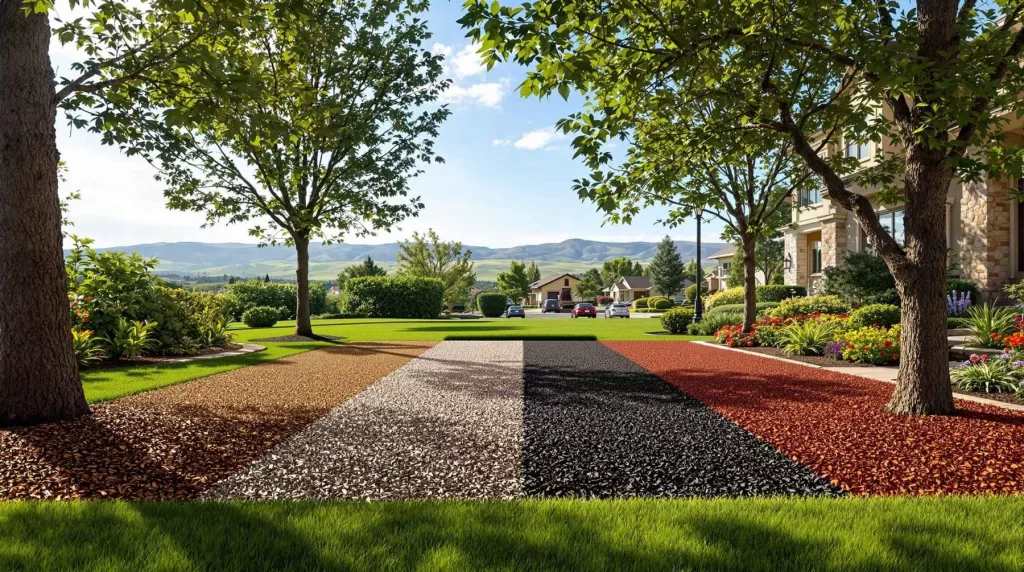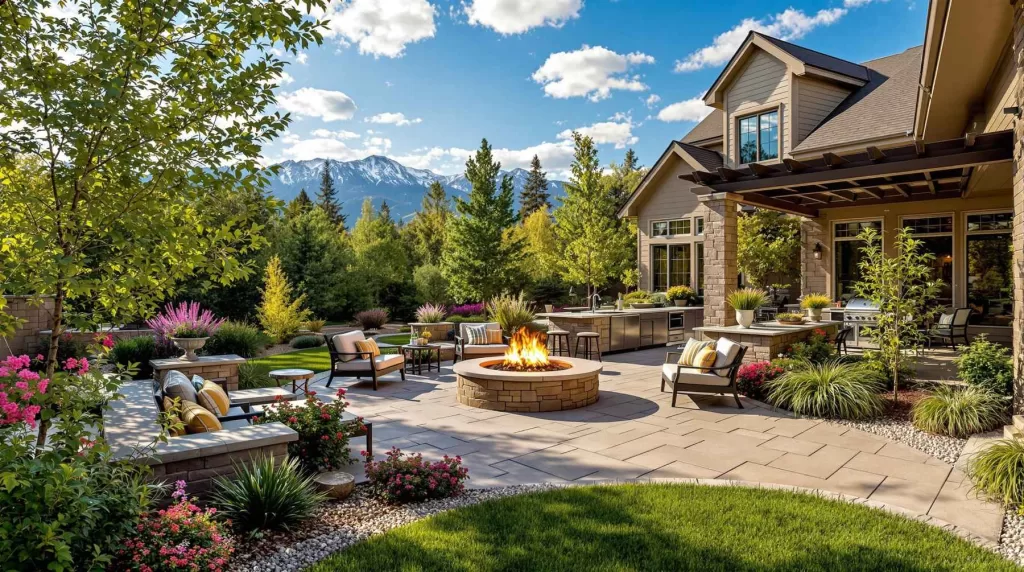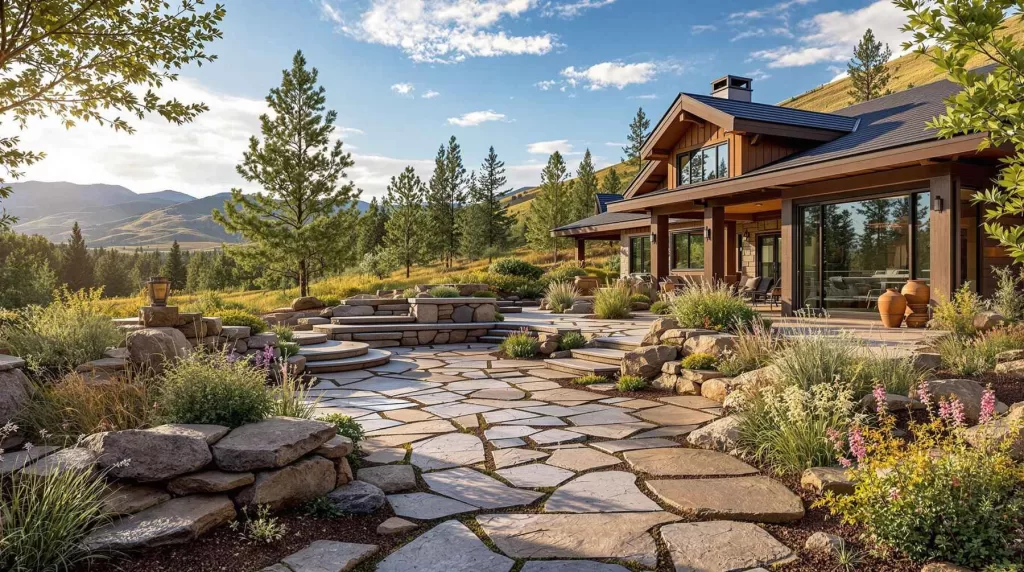Introduction
Castle Pines homeowners are no strangers to the challenges of maintaining a beautiful landscape in a semi-arid climate. Between strict watering regulations, rising utility costs, and the need to conserve resources, the demand for efficient irrigation solutions has never been higher. Drip irrigation is emerging as one of the most effective and eco-friendly ways to maintain vibrant outdoor spaces while reducing water waste and keeping long-term costs in check.
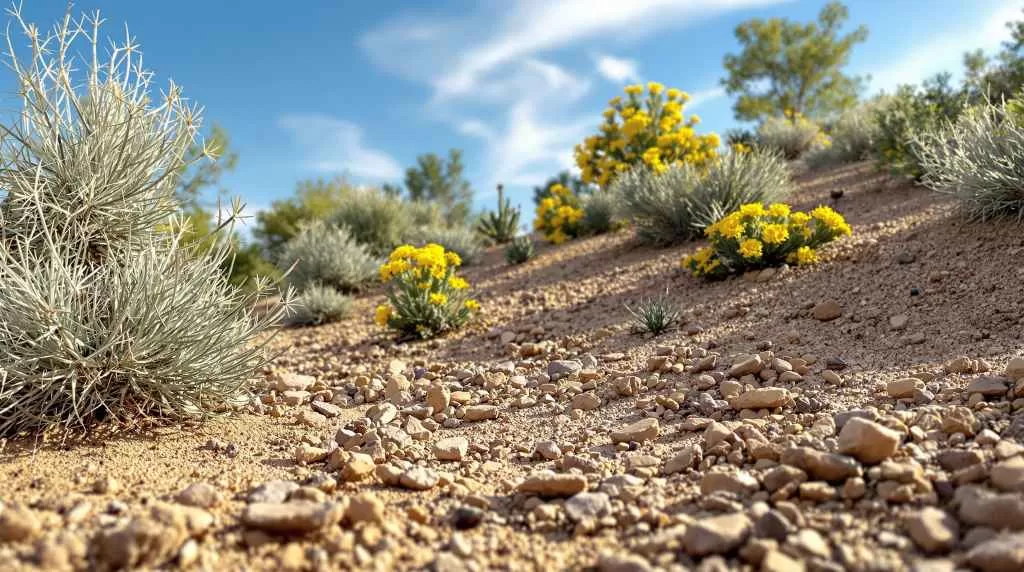
Why Water Conservation Matters in Castle Pines
Working with an experienced Castle Pines landscaping contractor can help ensure your irrigation system meets local guidelines, maximizes efficiency, and supports a thriving landscape even in Colorado’s dry climate.
Semi-Arid Climate Challenges
Castle Pines sits over 6,000 feet above sea level, where dry air and intense sunlight lead to rapid evaporation. Plants here often require more frequent watering, yet traditional methods tend to waste water through overspray and runoff—making drip irrigation a smarter choice.
HOA and Municipal Water Regulations
Most Castle Pines neighborhoods are governed by HOAs with strict landscaping rules, including limits on watering days and times. On top of that, regional water providers enforce seasonal restrictions, making it critical for residents to use low-water irrigation solutions that help stay within the rules.
The Rising Cost of Water
Water rates have steadily increased across Douglas County, and Castle Pines is no exception. With traditional sprinkler systems, much of the water ends up on sidewalks or evaporates before reaching roots. Drip irrigation minimizes this waste, leading to measurable monthly savings on water bills over time.
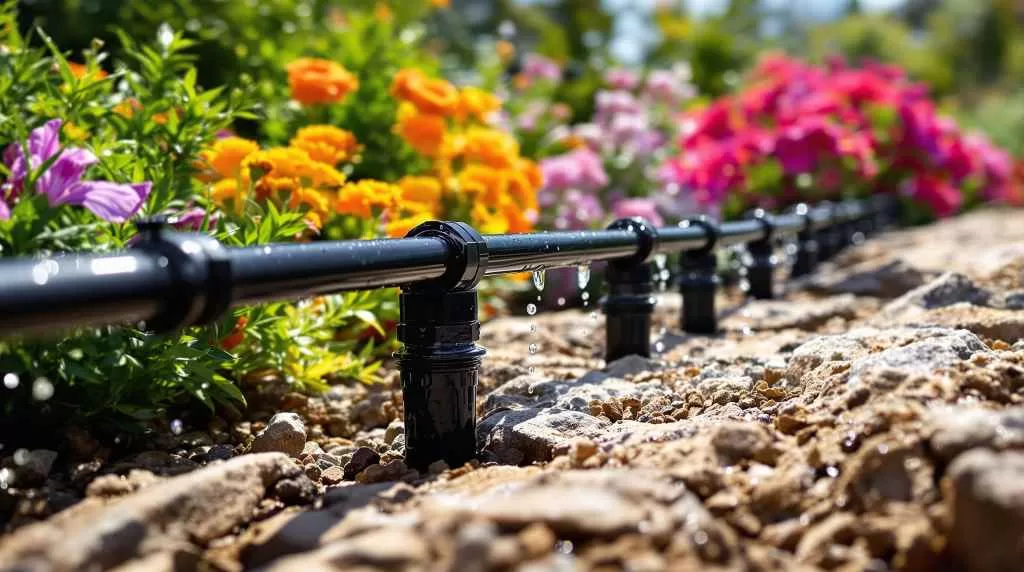
What Is Drip Irrigation?
Drip irrigation is a foundational part of many high-end Castle Pines landscaping services, offering homeowners a water-efficient solution that delivers moisture precisely where plants need it most—at the root level. Unlike traditional sprinkler systems that spray water across broad areas, drip systems focus on slow, consistent hydration that reduces waste and promotes healthier growth.
Components of a Drip System
A typical drip irrigation setup includes mainline tubing, emitters, filters, pressure regulators, and optional timers or smart controllers. These components work together to regulate flow and ensure water is delivered evenly across the landscape.
How Drip Irrigation Delivers Water
Drip systems release water slowly and directly at the base of each plant using emitters that can be adjusted for specific flow rates. This reduces water loss from evaporation or wind and ensures deeper, more effective root penetration.
Drip Irrigation vs. Sprinklers
While sprinklers spray water broadly across lawns and plant beds, drip irrigation systems target the soil at the base of plants, making them far more efficient. This method prevents overwatering, reduces puddling, and avoids common issues like fungal disease that arise from wet foliage.
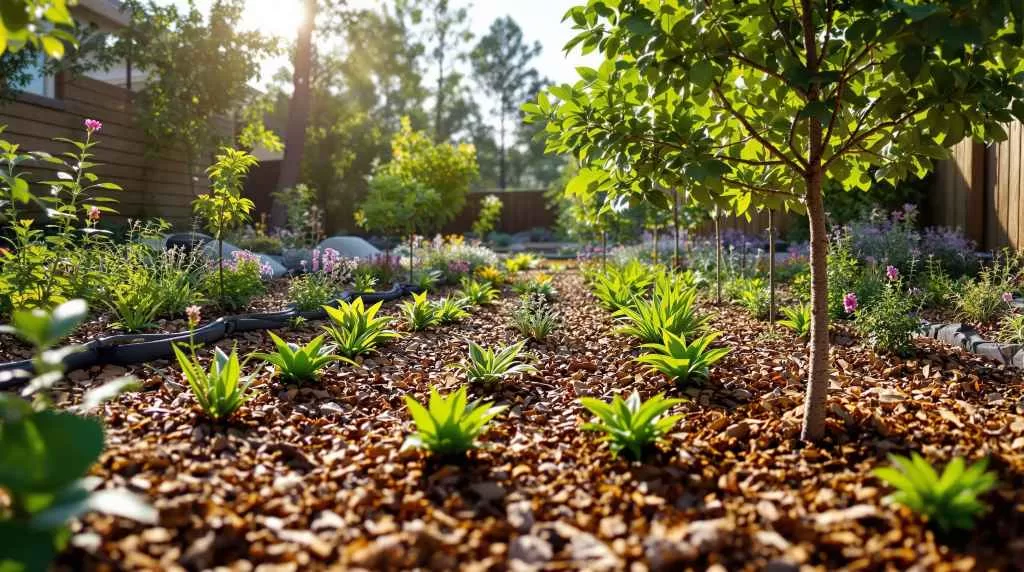
Benefits of Drip Irrigation for Castle Pines Landscapes
Incorporating drip irrigation into a custom Castle Pines landscaping plan provides a wide range of advantages—especially in a region where conserving water is as important as creating a visually stunning yard. This section explores the many ways drip systems enhance both performance and aesthetics.
Improved Water Efficiency
Drip irrigation can reduce water usage by up to 50% compared to traditional sprinklers, thanks to its ability to deliver water exactly where it’s needed. This not only minimizes waste but also helps homeowners meet local water restrictions without sacrificing landscape quality.
Healthier Plants and Root Systems
Because water is applied slowly at the base of plants, roots grow deeper and stronger. This promotes resilience during hot summers and ensures consistent moisture levels that reduce stress and improve overall plant health.
Less Weeding and Fewer Pests
Since drip systems don’t spray water over large areas, weed seeds are less likely to germinate between plants. Plus, keeping foliage dry discourages insect activity and fungal diseases, leading to a cleaner, healthier yard.
Slope and Elevation Adaptability
Many Castle Pines properties are built on sloped lots where water from sprinklers tends to run off before it soaks in. Drip irrigation systems release water slowly enough to prevent runoff, making them ideal for uneven terrain and hillside planting beds.
Better Control Over Irrigation Zones
Drip systems are highly customizable, allowing different zones to be tailored to the specific needs of trees, shrubs, flowers, and vegetables. This targeted approach gives homeowners precise control over how much water each part of the yard receives.
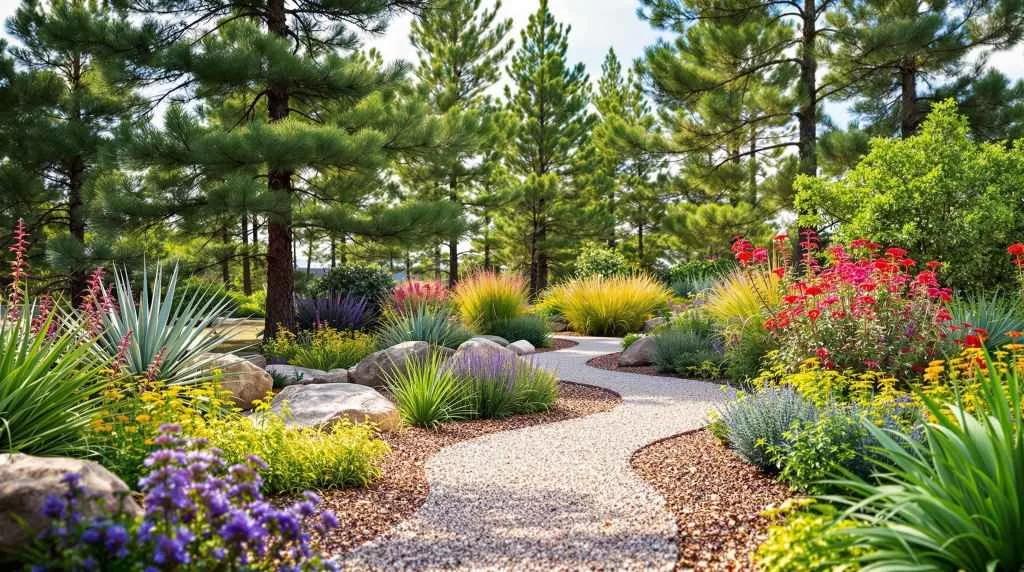
Drip Irrigation and Xeriscaping
With the growing demand for drought-friendly landscapes, drip irrigation plays a key role in supporting Castle Pines outdoor living solutions that are both beautiful and sustainable. This section explains how drip systems perfectly complement xeriscaping, helping homeowners save water without sacrificing curb appeal.
Why Xeriscaping Is on the Rise
Xeriscaping is becoming more popular in Castle Pines as residents look for low-maintenance, water-conscious landscaping options. With ongoing restrictions and rising water costs, homeowners are turning to designs that thrive with less water—making drip irrigation a natural fit.
Supporting Native and Drought-Tolerant Plants
Native plants like rabbitbrush, penstemon, and blue grama grass require less water once established. Drip systems provide targeted hydration during the critical establishment period and continue supporting these plants with minimal water thereafter.
Aesthetics Without Compromise
Drip irrigation doesn’t mean you have to sacrifice beauty. When paired with xeriscape design, it allows for lush, vibrant plant groupings that stay healthy without constant watering—delivering both style and sustainability in one system.
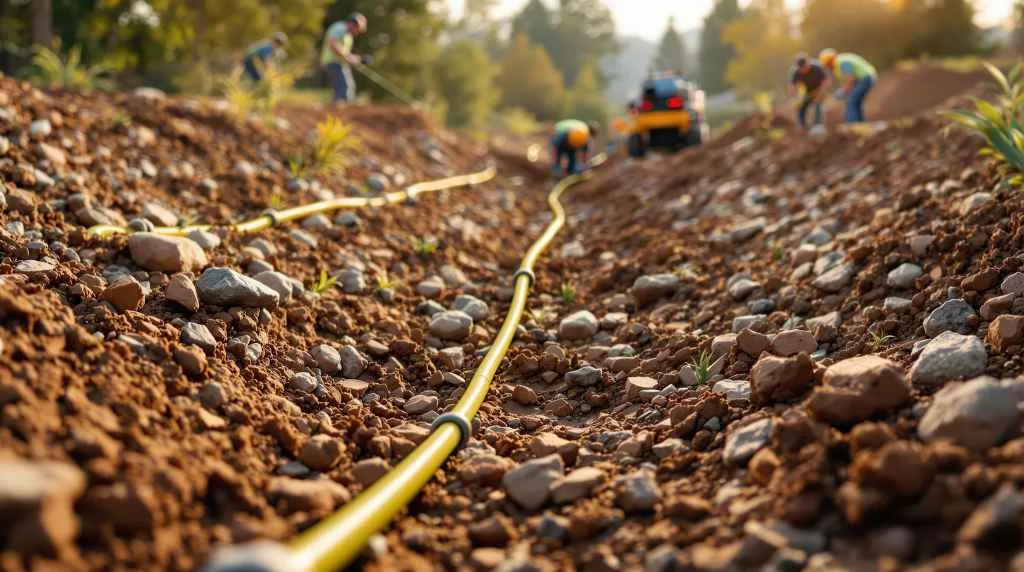
Installation Considerations in Castle Pines
When planning any major property upgrades in Castle Pines, it’s important to factor in the local terrain, soil conditions, and HOA requirements. Drip irrigation systems offer flexibility, but a successful installation still depends on thoughtful design and proper setup.
Soil Types and Irrigation Planning
Castle Pines soils often contain a mix of clay and rocky material, which impacts how water is absorbed and retained. A professional installer will evaluate the soil composition to determine emitter placement, flow rates, and whether amendments or deeper trenching are needed.
HOA Requirements and Approvals
Before installing any new irrigation system, homeowners should review HOA landscaping guidelines to ensure compliance. Many associations require advance approval for visible irrigation infrastructure or changes to approved landscape plans.
Hiring a Professional Installer
While DIY systems exist, drip irrigation works best when custom-designed for your yard’s layout, sun exposure, and plant types. Hiring a qualified installer ensures proper filtration, zoning, and pressure regulation—all of which contribute to long-term performance and water savings.

Maintaining a Drip Irrigation System
Drip irrigation systems are low maintenance compared to traditional sprinklers, but they do require occasional care to stay efficient. With a few simple checks throughout the year, you can keep your system running smoothly and avoid costly issues.
Seasonal Maintenance Tasks
In Castle Pines, winterizing your drip system is essential due to freezing temperatures. Blowing out the lines, shutting off the water supply, and protecting valves from frost will prevent damage. In spring, a quick inspection and flush help get everything back up and running.
Checking for Clogs and Leaks
Emitters and tubing can occasionally become clogged with debris or mineral buildup, especially if filters aren’t maintained. A visual check every month or two can catch leaks early and ensure all plants are receiving adequate water.
Adjusting for Plant Growth
As plants mature or you change your landscape layout, you may need to relocate or add emitters to accommodate growth. Regularly reassessing emitter placement ensures that each plant continues to receive the right amount of water over time.
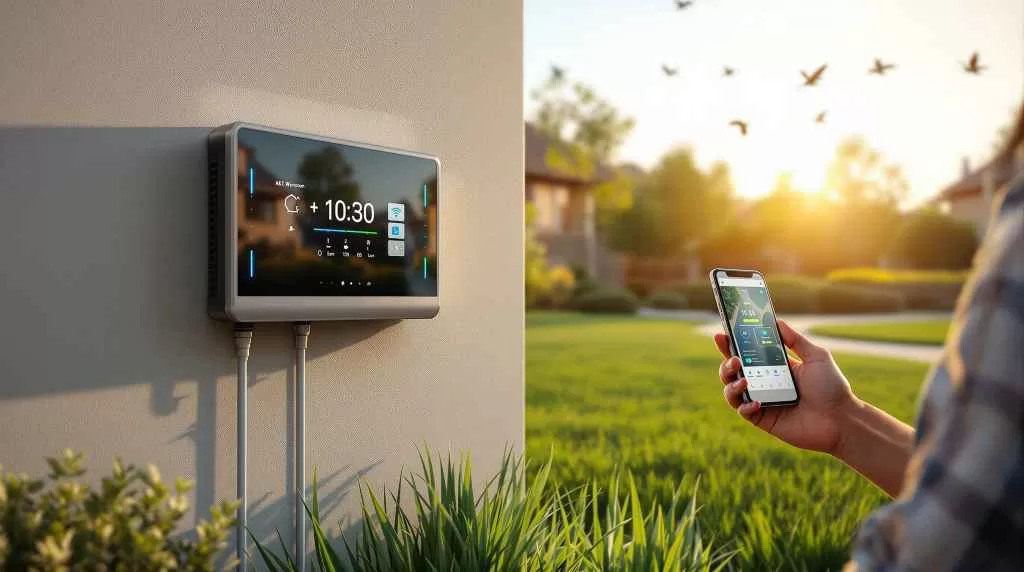
Smart Irrigation Integration
Modern drip irrigation systems can easily be enhanced with smart technology, offering even greater efficiency and convenience. When paired with professional outdoor design in Castle Pines, these upgrades give homeowners more control while helping reduce waste and maintenance needs.
Using Smart Controllers
Smart controllers allow your drip system to automatically adjust watering schedules based on real-time weather, plant needs, and soil conditions. These devices reduce overwatering, comply with local restrictions, and can be managed from a smartphone or tablet.
Remote Monitoring and Mobile Apps
Most modern irrigation controllers come with user-friendly apps that let you monitor your system from anywhere. You can start, stop, or adjust watering cycles remotely—ideal for vacations, busy schedules, or responding quickly to weather changes.
Integrating with Other Landscape Features
Smart drip systems can be programmed to work alongside lighting, drainage, and other features for a unified outdoor experience. This makes your landscape not only efficient, but also easy to manage as a fully integrated system.
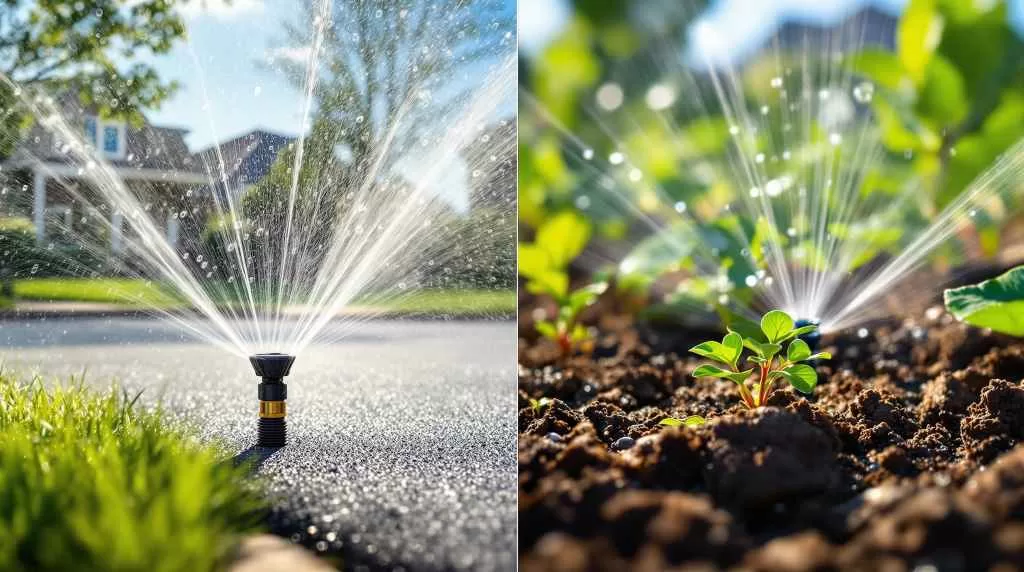
Common Myths About Drip Irrigation
Despite its benefits, drip irrigation is often misunderstood. This section clears up a few common myths that may cause hesitation for homeowners considering a more efficient watering system.
“Drip Irrigation Is Only for Desert Climates”
While it’s true that drip systems are popular in desert regions, they’re just as effective in semi-arid climates like Castle Pines, where water conservation is key and plant health depends on targeted hydration.
“It’s Too Complicated to Maintain”
Many homeowners believe drip systems are difficult to care for, but with basic seasonal maintenance and simple inspections, they’re often easier to manage than sprinkler systems—which can suffer from broken heads and misaligned spray patterns.
“It Won’t Work for Lawns”
Although drip irrigation is best known for beds and shrubs, subsurface drip systems are available for lawns too. When installed correctly, these systems can keep turf healthy while using significantly less water than traditional pop-up sprinklers.
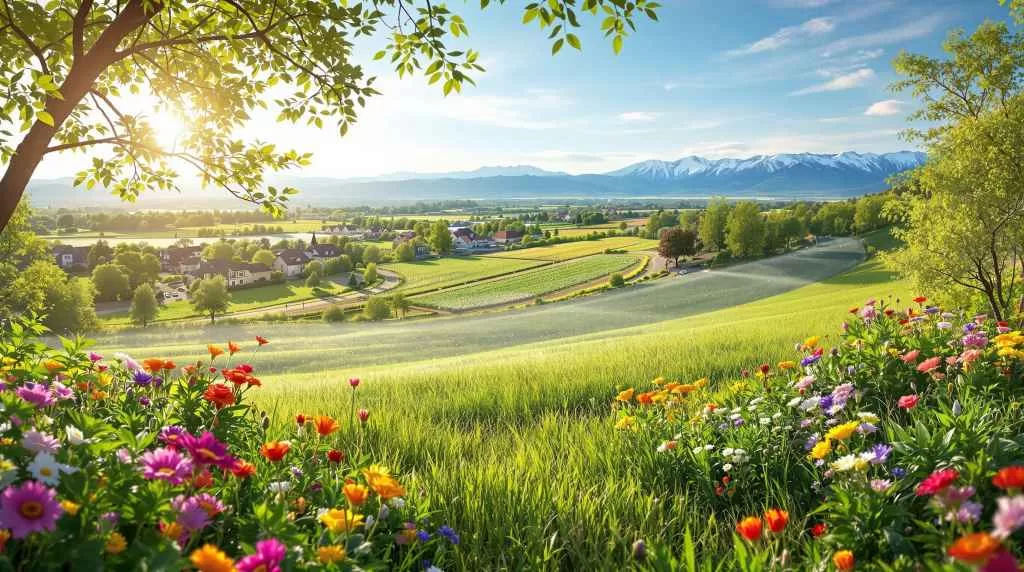
Environmental Benefits Beyond Your Backyard
Drip irrigation doesn’t just benefit your landscape—it also supports larger environmental efforts. By reducing waste and runoff, it plays a meaningful role in protecting the natural surroundings of Castle Pines and beyond.
Reduced Runoff and Soil Erosion
Traditional sprinklers often lead to excess water flowing off hardscapes and slopes, carrying away valuable topsoil. Drip systems apply water slowly and directly, helping to preserve soil structure and reduce erosion across your property.
Protecting Local Water Resources
With the Denver metro area growing, the demand for water continues to rise. Using less water per household through drip irrigation helps reduce strain on reservoirs, rivers, and underground aquifers that supply Castle Pines and neighboring communities.
Supporting Sustainability Goals
Castle Pines has long embraced a forward-thinking approach to development and landscaping. Drip irrigation aligns with community-wide sustainability goals, making it a smart choice for eco-conscious homeowners who want to support long-term environmental health.
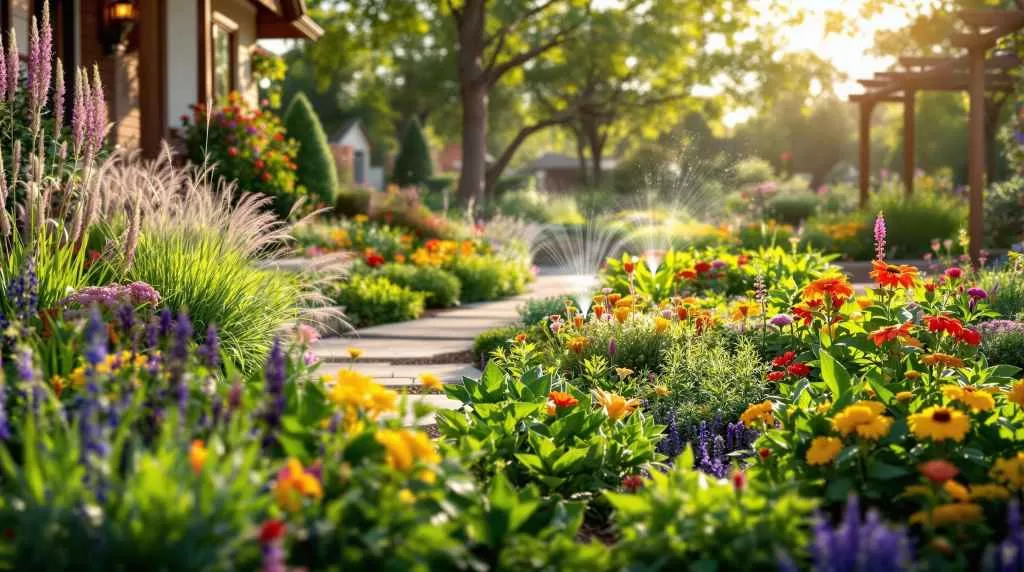
Real-World Drip Irrigation Success Stories in Castle Pines
Drip irrigation isn’t just a theory—it’s transforming landscapes across Castle Pines in real, tangible ways. These examples highlight how homeowners are using drip systems to create healthier, more efficient outdoor spaces.
Front Yard Curb Appeal with Native Plants
One homeowner revamped their front yard with native grasses and drought-tolerant perennials, using drip irrigation to maintain a lush appearance without high water use. The result was a beautiful, HOA-approved landscape with lower monthly bills.
Backyard Vegetable Garden with Precision Watering
Another Castle Pines resident installed a raised-bed vegetable garden and connected it to a zoned drip system. With consistent moisture delivered at the roots, their harvest flourished—even during the hottest weeks of summer.
Multi-Zone Beds with Different Watering Needs
A custom landscape project included trees, shrubs, flowers, and ornamental grasses across several planting zones. A well-designed drip irrigation system allowed for tailored watering schedules based on each plant group’s needs, maximizing both water savings and plant health.

The Cost of Drip Irrigation and Long-Term Savings
While drip irrigation may require an upfront investment, the long-term benefits make it a cost-effective upgrade for Castle Pines homeowners. This section breaks down what you can expect financially—and how you’ll likely save in the years ahead.
Upfront Installation Costs
Depending on your yard size, layout, and the complexity of the system, professional drip irrigation installation in Castle Pines typically ranges from a few hundred to a few thousand dollars. Custom systems with smart controls and zoning will fall at the higher end of that spectrum.
Water Bill Savings Over Time
Drip systems can reduce water usage by up to 50%, which translates into significant monthly savings—especially during peak irrigation months. Many homeowners see a noticeable drop in their utility bills within the first season.
Avoiding Fines from Overwatering
Castle Pines and local HOAs enforce watering regulations, and violations can lead to warnings or fines. Drip irrigation helps you stay within compliance effortlessly, reducing the risk of penalties while supporting sustainability efforts.
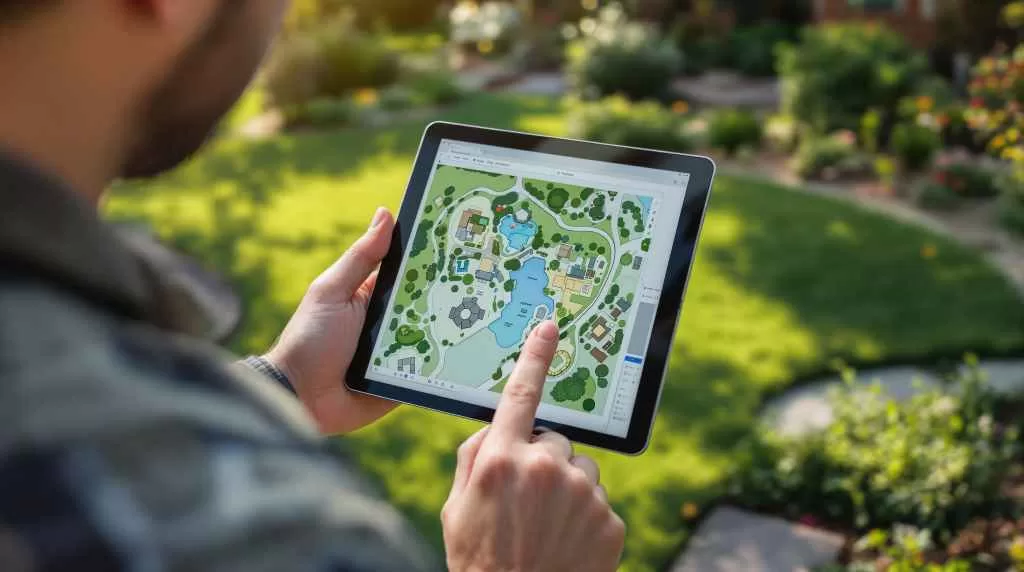
Is Drip Irrigation Right for Your Property?
Before investing in a new irrigation system, it’s important to evaluate whether drip irrigation is the best fit for your landscape. This section will help you understand where drip performs best—and when alternatives might be more appropriate.
Ideal Landscape Types for Drip
Drip irrigation is especially effective for planting beds, trees, shrubs, vegetable gardens, and xeriscapes. If your yard includes these elements, a drip system can provide precise watering that supports plant health while cutting down on waste.
When Drip Might Not Be the Best Fit
While drip systems are versatile, they may not be ideal for large turf areas that require uniform watering. In those cases, a hybrid approach—using sprinklers for lawn areas and drip for beds—can offer the best of both worlds.
Consultation and Custom Design
The best way to determine suitability is through a professional evaluation. A site-specific consultation will take into account plant types, slope, sun exposure, and soil, resulting in a custom design that maximizes efficiency and meets your property’s unique needs.
Ready to Transform Your Outdoor Space?
If you’re ready to take the next step toward a water-efficient, low-maintenance yard, our team at Custom Landscapes by Design is here to help. We specialize in designing and installing drip irrigation systems that are tailored to the unique terrain and climate of Castle Pines and surrounding areas like Castle Rock, Parker, and Lone Tree. Whether you’re planning a full landscape makeover or simply upgrading your irrigation system, we’ll ensure your outdoor space is both beautiful and efficient. Let’s build a landscape that works smarter—not harder—and adds lasting value to your home.

